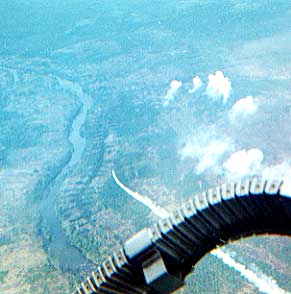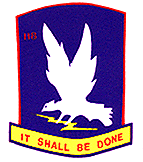 |
|
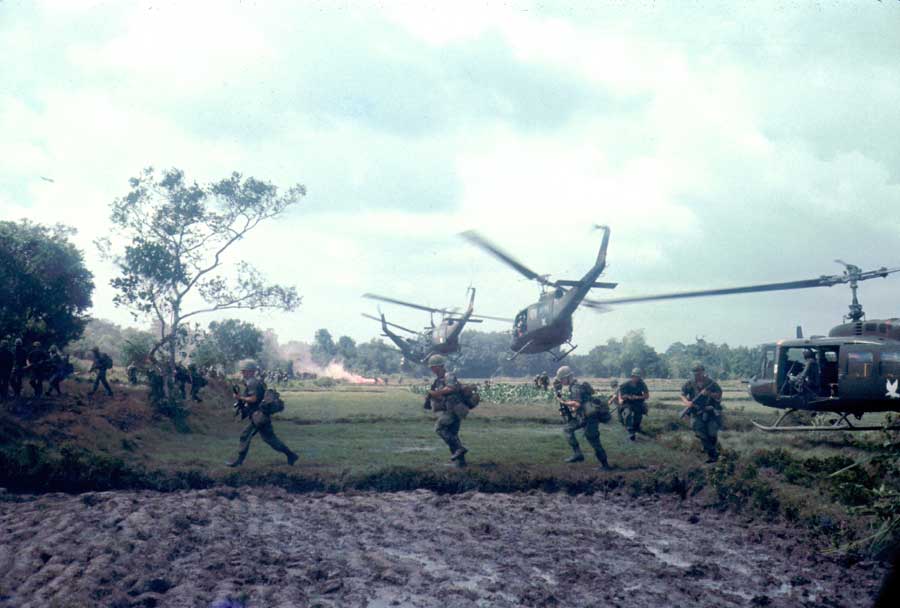
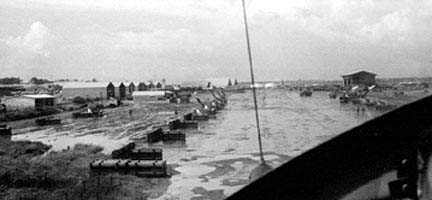
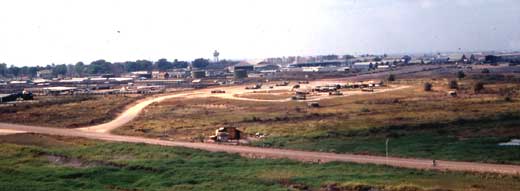
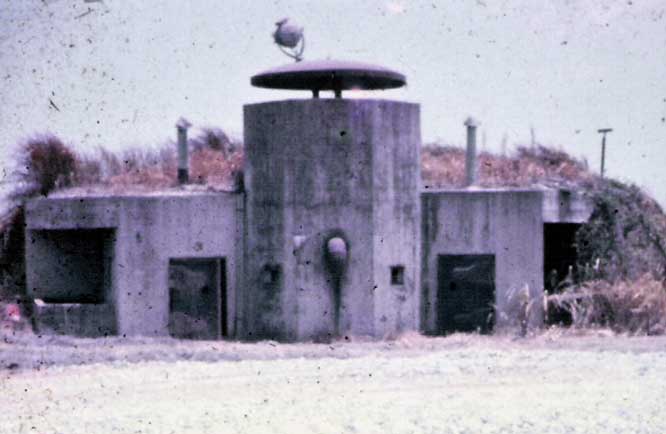
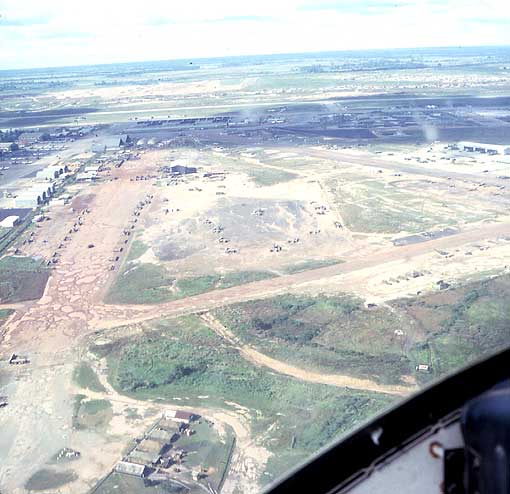
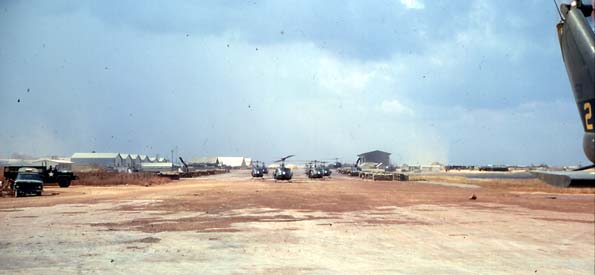
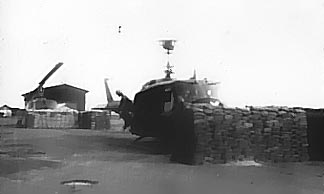
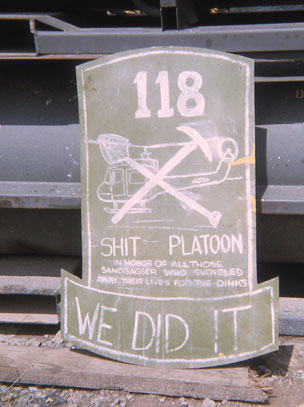
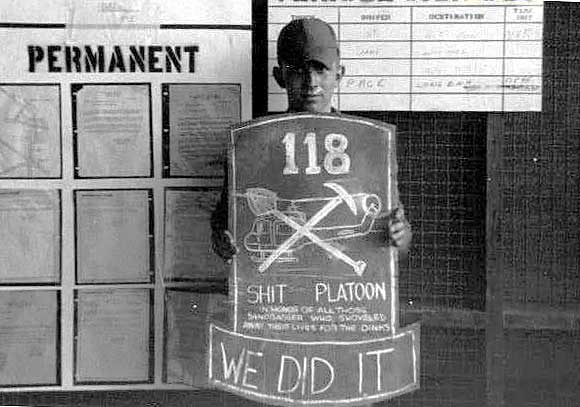
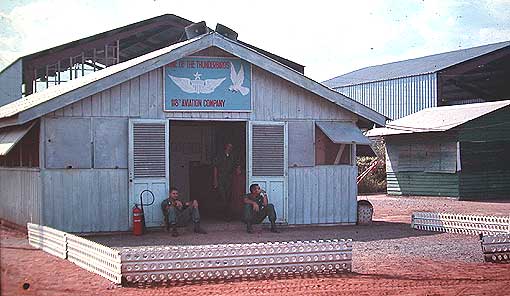
|
|
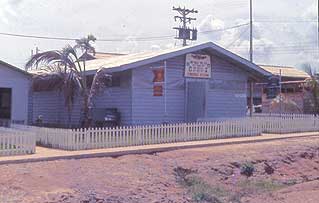 |
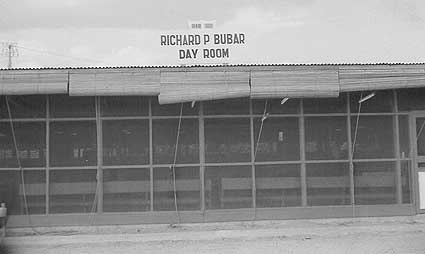
|
|
|
|
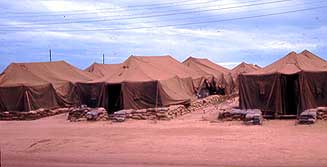 |
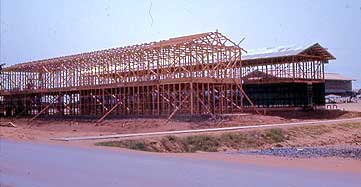 |
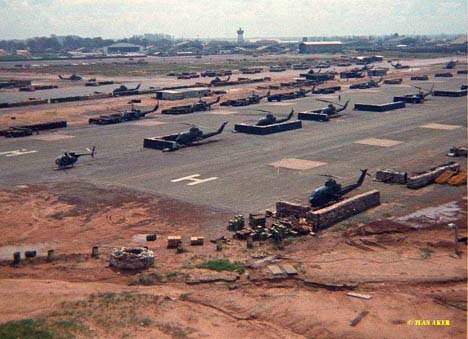
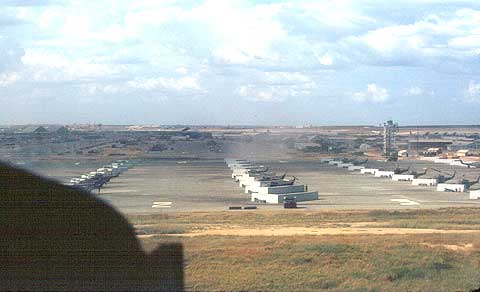
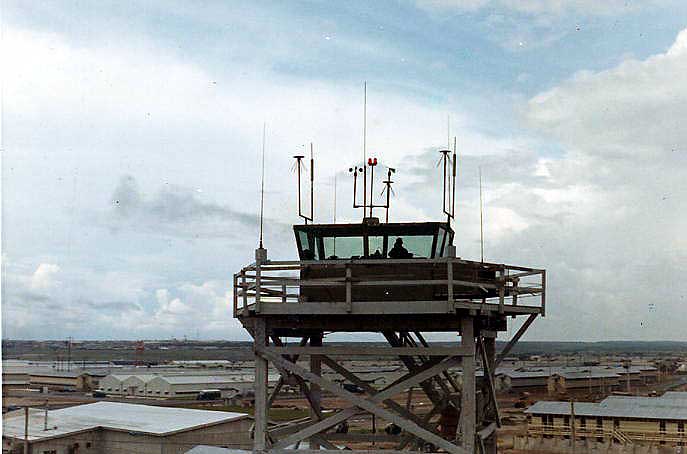
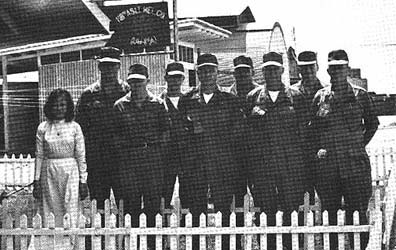 (Photo from "145th Combat Aviation Battalion"; Pictorial History, Vol. II) |
|
|
|
|
|
|
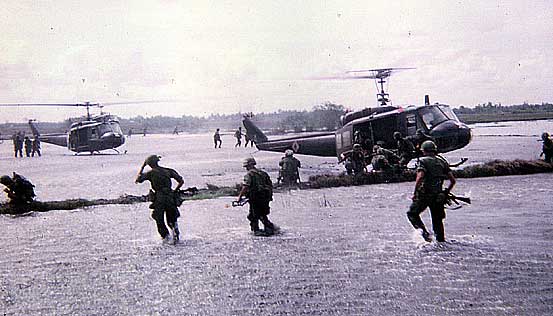 |
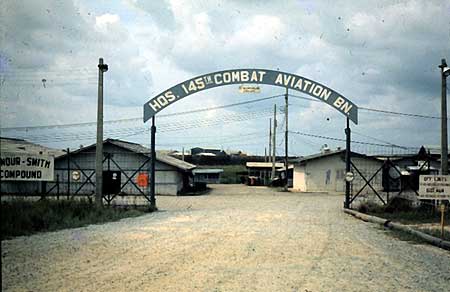 |
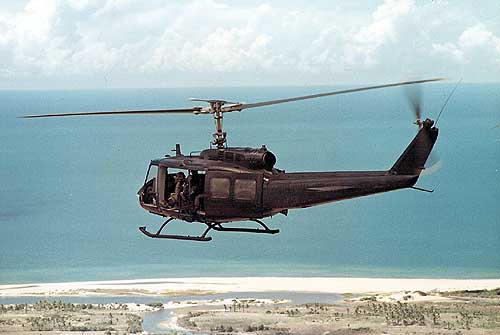 |
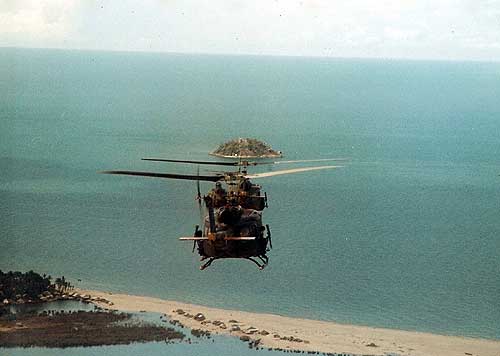
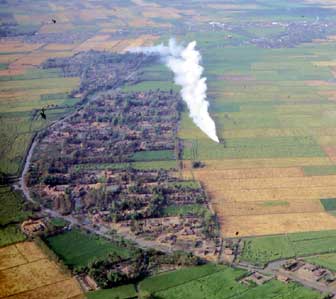 |
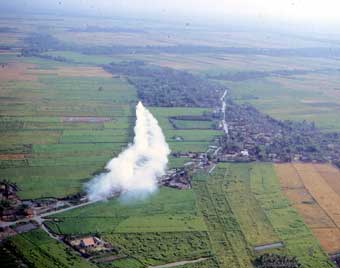 |
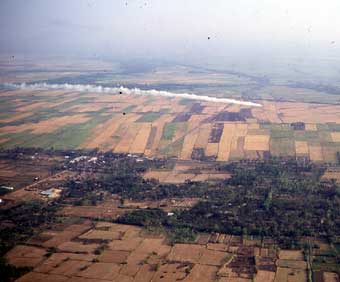
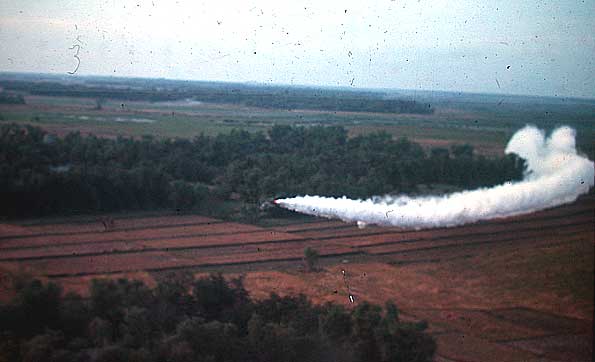
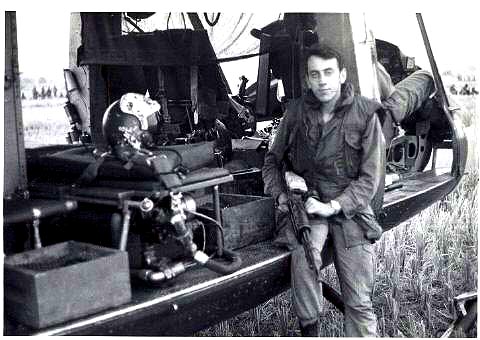
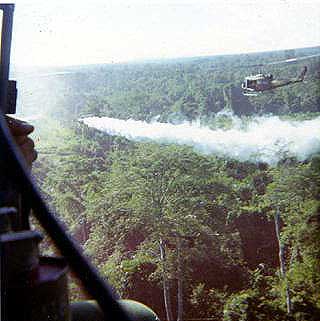 |
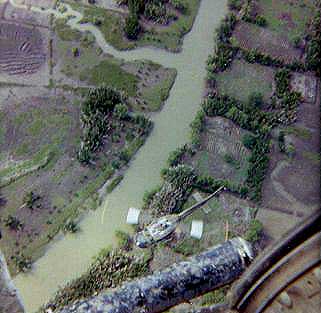 |
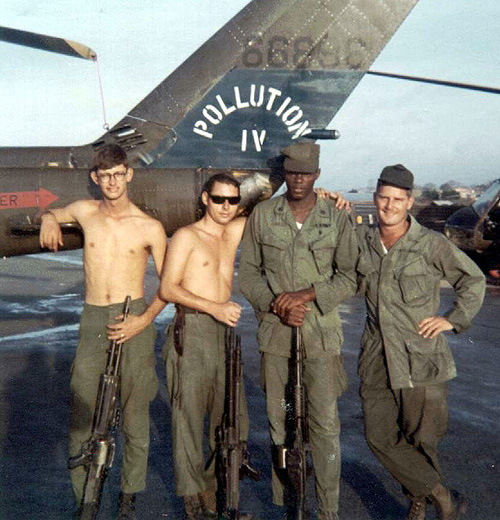 |
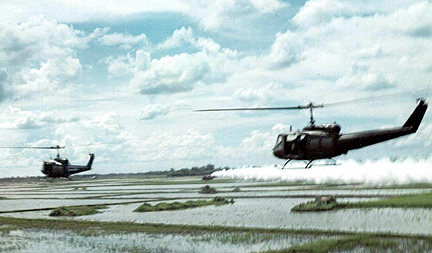 |
|
"To get the Smoke Ship (Pollution IV) started for the 118th we converted one of the blue tails(Second Platoon). We had a crew of 6. Three were gunners working the tree line, full suppression all the time on a 1strun LZ and the crew chief guarding the inside of the horse shoe profile we flew around the slicks. The Bandits protected us all but Pollution 4 was on the deck at 80 kts pumping out the smoke screen, cutting off the VC's view of the ships in the LZ. We had our share of bullet holes but nobody was killed or wounded during my 6 months of smoke ship." caught me on my chest and threw me to the floor of the helicopter. He pointed down at a snake pit full of snakes in the side of the dyke I probably would have landed in if I had kept going. I bought him a case of beer that night."
|
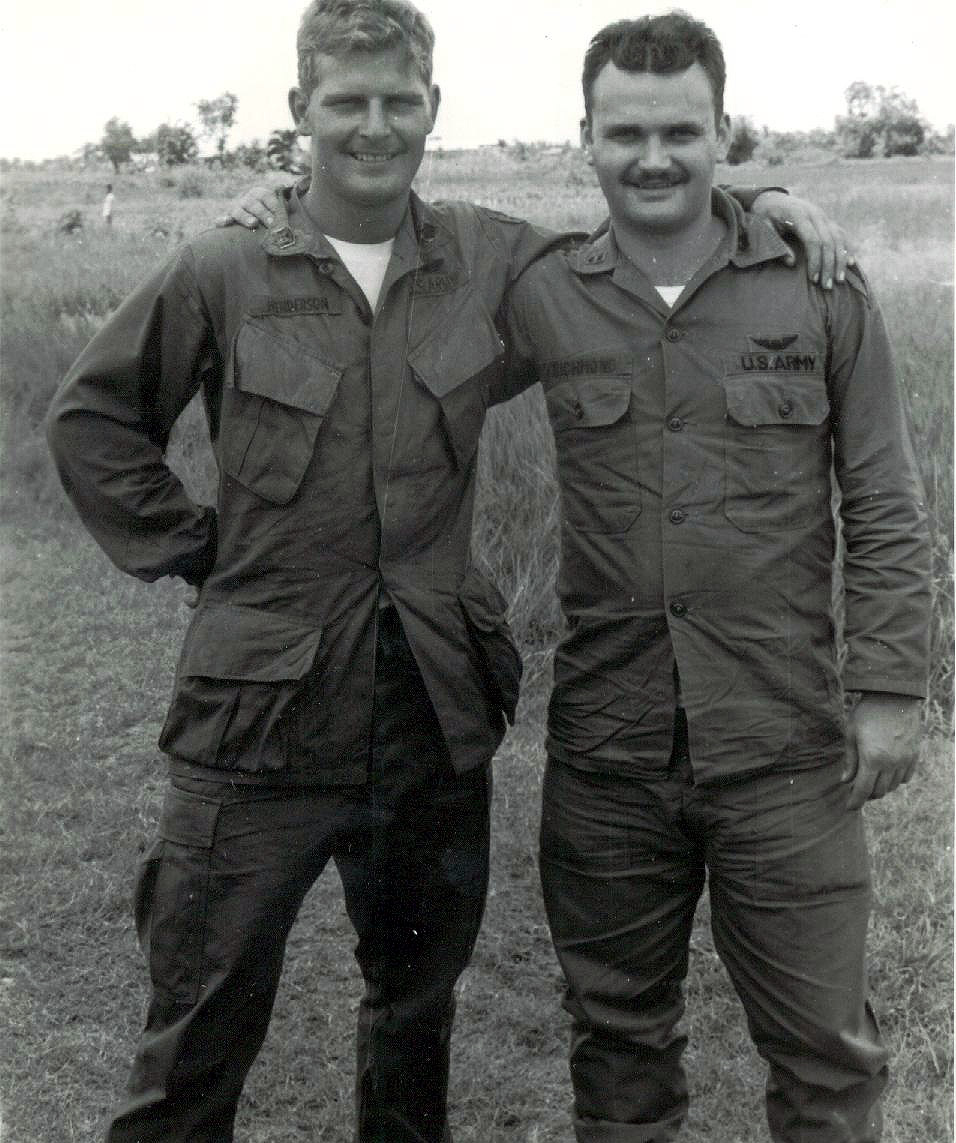
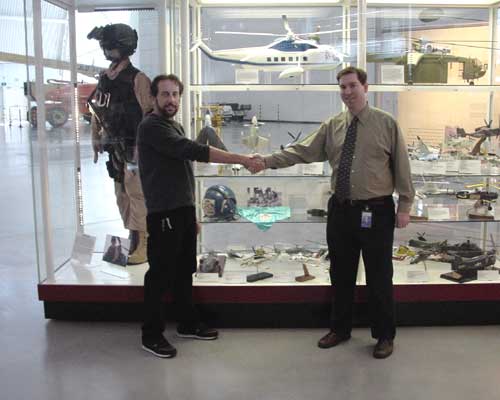
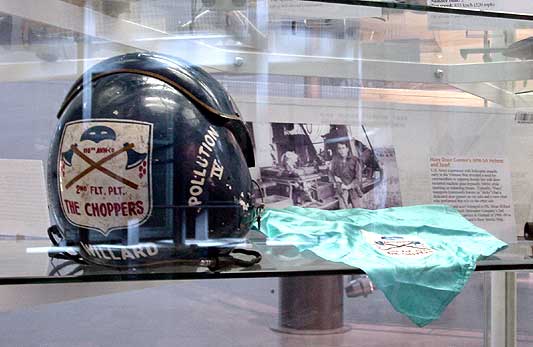
|
|
| Bruce Plumb, a Crew-Chief remembers that, "Also, pollution 4 ate many tail booms from oil eating up rivets and hard points. Also, we had to keep a special eye on the transmission cooler because of the oil. The .50 cal had to have special padding under the mount, and even with that there was cracking of airframe at door openings. |
%20of%20SmokeShipPeeff--68.jpg)
|
In April 1968, when I made PIC, I was honored, along with another WO in the 1st Platoon with the assignment of one of the first 2 H-models to arrive in the company. That day I got to paint it with a red strip and big white 7 at the base of the vertical fin. (SP5 Bruce Plumb contends that the first H-model was his ship, Red 2) By summer I was asked to ‘volunteer’ to fly Pollution IV for First Platoon which was one of the next 4 H models to arrive. Two of these H models were fitted with smoke equipment that worked, their tail numbers were IV and VIII. The Second Platoon flew VIII when 2nd Platoon flew lead and I flew IV when 1st Platoon flew lead. Generally every other day was our ‘pigs and rice” missions. One of my three gunners was nicknamed “Killer” (David Evans) a lad of 130 lbs, about 5’5’’ and big glasses. A strange 19 year old but could place a tracer round in the top of a palm tree or the center of a bomb crater puddle from 2000’. I won money on him doing that several times. He could fix any M-60 problem that came up and I saw him drop several VC coming out of a tree line on a smoke run. No nude pictures on his wall just guns and ammo pictures. |
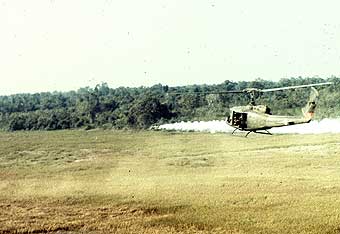
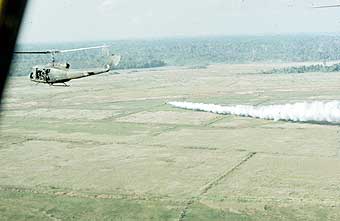
|
|
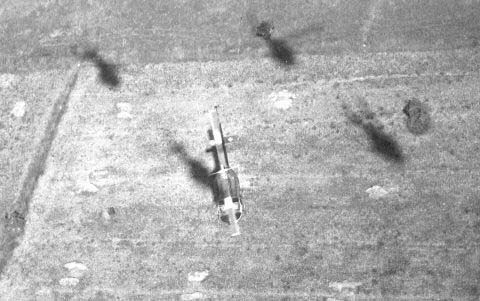
|
"I flew on the smoke ship a few times. It was a "Red tail," I think. Even though we had "Star 5" and "Rainbow 6" as special named aircraft, the 2nd platoon as, I remember, had Pollution 4 (I was in first platoon.) Yes, In 1969 it was fitted with a 50 cal. out the left door." "It was an exciting ride to say the least. The 50 cal. hammering out the left side and smoke oil spraying into the hot exhaust. What more could a young crazy pilot ask for?" "The 50 cal. was mounted with rubber padding and wood to absorb the shock while firing. It didn't work! The deck it was attached to was being voided(hollowed or separated) badly and the aircraft was sent back to the states for rebuild sometime in 1969." "While I was still in Vietnam, I received a letter from a guy that I had known that had been a crew-chief with the 190th Spartans in 1968. He was at that time stationed at Fort Benning,GA." "He wrote to me that they had received a rebuilt Huey and that he could see under the over sprayed paint the outline of the tail flash of a four and knew it had been in the 118th. He asked me if I could explain all of the patches that the aircraft had! I wrote him back that it was probably our old smoke ship." |
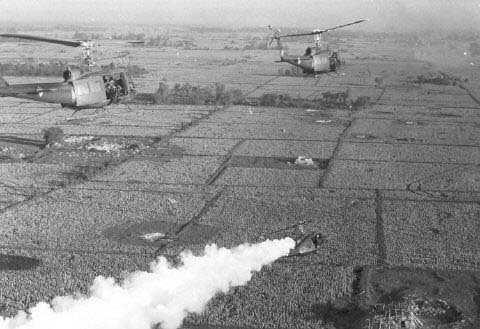
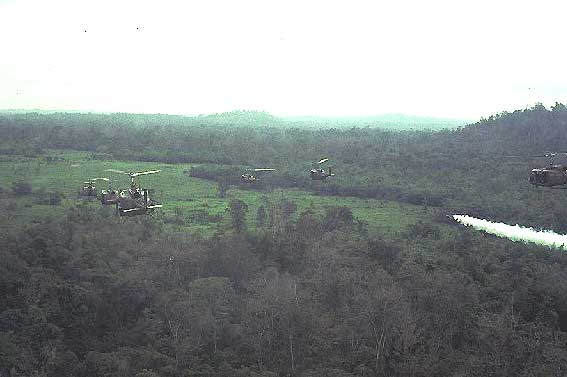
--69.jpg) |
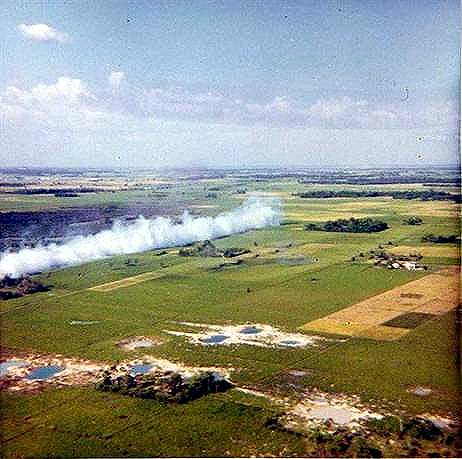 |
